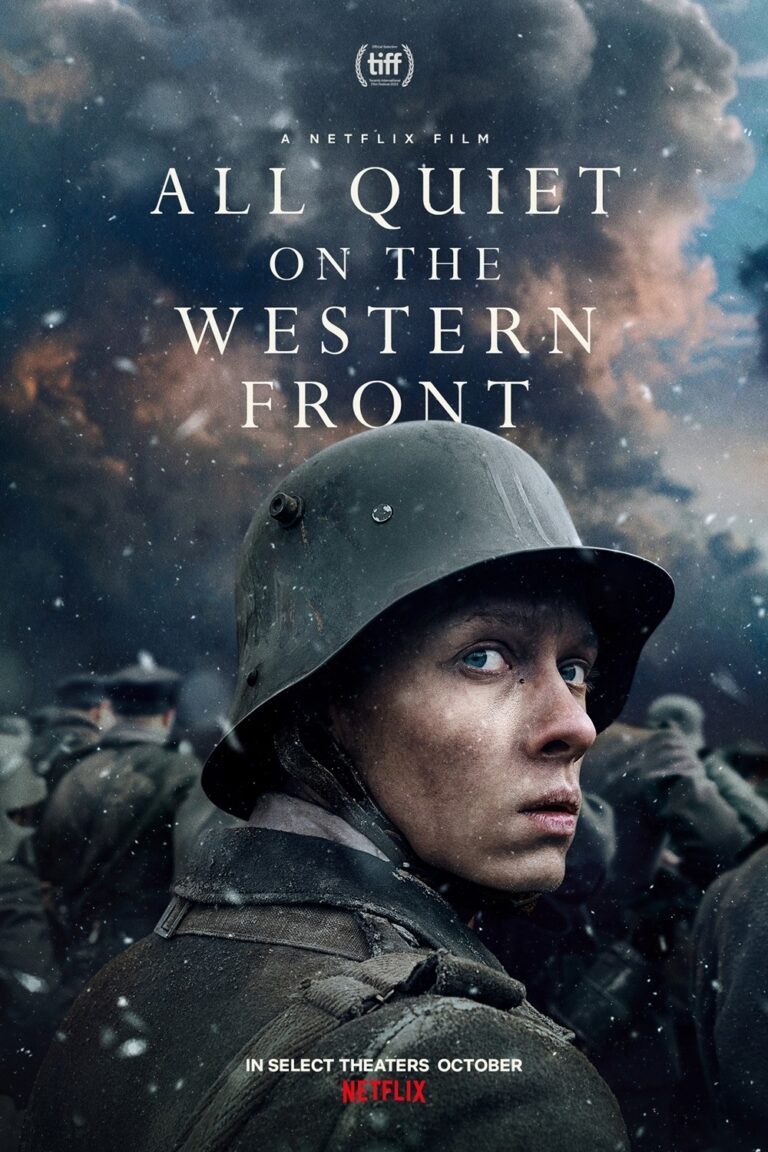Synopsis
It was the year 1917, and the war had been raging for three years. Paul Bäumer, a seventeen-year-old, enlisted in the Imperial German Army alongside his friends Albert Kropp, Franz Müller, and Ludwig Behm. They were soon deployed to Northern France, and their romantic view of the war was quickly shattered by the realities of trench warfare. Ludwig was killed on the first night, and the remaining three were befriended by Stanislaus “Kat” Katczinsky, an older soldier.
Matthias Erzberger, weary of mounting losses, met with German High Command to persuade them to begin armistice talks with the Allied powers. Meanwhile, Paul and Kat stole a goose from a farm to share with Albert, Franz, and another veteran, Tjaden Stackfleet. Franz spent the night with a French woman and brought back her scarf as a souvenir.
Erzberger and the German delegation boarded a train bound for the Forest of Compiègne to negotiate a ceasefire. Paul and his friends went on a mission to find 60 missing recruits and discovered that they had been killed by gas. General Friedrichs, who opposed the armistice talks, ordered an attack before French reinforcements arrived.
On November 11, Erzberger’s delegation signed an armistice set to take effect at 11:00 AM. Paul and Kat stole from the farm one last time, but Kat was shot and died before arriving at an infirmary. Friedrichs ordered an attack to start at 10:45 AM, and Paul killed as many French soldiers as he could before being speared through the chest by a bayonet seconds before 11:00 AM. Paul stumbled out into the trenches and marveled at the end of conflict as he died from his wound.
Paul’s death was not recorded, and his friends were left to mourn his passing. The war had taken its toll on all of them, and they were left to pick up the pieces and move on with their lives. The war had ended, but the cost was high.
Critique
The film adaptation of Erich Maria Remarque‘s famed novel of World War I, “All Quiet on the Western Front”, is now available in select theaters and on Netflix. Directed by Edward Berger, the film follows the story of young recruit Paul Bäumer (Felix Kammerer) as he is thrust into the head-spinning carnage of warfare.
The film begins with Paul receiving his wrong-sized uniform, recycled off of a corpse, and follows him as he learns what it is to kill and attempts to forge fellowship in his untenable situation. Berger adds a parallel storyline in which real-life German vice-chancellor Matthias Erzberger tries to broker a peace with the French and others, demonstrating that in the Great War, there really WERE some “good Germans”.
The film is packed with realistic-seeming carnage and ear-splitting aural experience of a fire-fight, and is state-of-the-art in shoving your nose in the horrors of war. However, the director puts forth some special pleading, such as a sequence when Paul and his older army friend Katczinsky go to steal a goose from a French farm and run afoul of a dead-eyed French boy. This is intended to villainize French farm boys, but ultimately I found this kind of whataboutism more amusing than disquieting.
Overall, this film is a powerful depiction of the agony of the young recruit at war, and is sure to leave a lasting impression on viewers.
Jane is a woman of keen intellect and fine taste, with a deep affection for the art of cinema and the power of storytelling. She possesses a sharp mind and a discerning eye, able to recognize the subtleties of a well-crafted film and express her opinions on the latest releases without hesitation. Her writing is graceful and engaging, capturing the essence of each film and conveying her thoughts with clarity and conviction.

